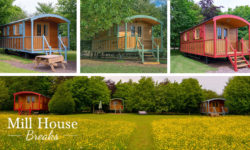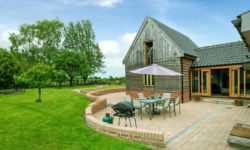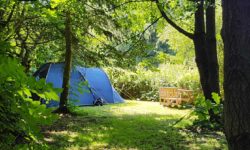If you enjoy spending time in nature, you may also be interested in our guide to Suffolk gardens, fishing in Suffolk, or alternatively our guide to the best picnic sites in Suffolk.
Birdwatching in Suffolk is a joy as the landscape of the county is diverse and varied, and so is the range of wildlife that inhabit it. Avid birdwatchers and novices alike can enjoy a coastal walk and the possibility of sighting a Marsh Harrier or Avocet, or head north to the southern edge of the Broads where you can catch birds on migration taking a break for some bathing.
Inland are the reserves of the Suffolk Wildlife Trust, the RSPB and Natural England (formerly English Nature), many of which have dedicated hides, and all of which boast a variety of bird spotting opportunities.
Read our guide to RSPB Suffolk here.
Here are a collection of the primary birdwatching sites in Suffolk, listed alphabetically. Where possible both directions and the Ordinance Survey Grid References have been included. For reference, the organization which maintains the sites is located in parenthesis next to the site itself. Happy birdwatching!
Bawdsey Hall
Bawdsey Hall in Woodbridge is a private nature reserve offering bird ringing demonstrations, hide hire, wildlife watching, and wildlife photography workshops.
Benacre Broad (Natural England)
Benacre Broad is located halfway between Lowestoft and Southwold. Formerly the site of peat diggings in the 1700’s, this is now a popular spot for Wheatears, Meadow Pipits and Linnets. If you head inward to the rougher denes and the West Kessingland Levels, you may spot short eared Owls, Kestrel, Hen and Marsh Harriers, and wintering Geese. Nearby River Hundred by the Benacre sluice is a great place to view winter Duck and autumn waders.
Blyth Estuary (English Nature)
A great place to see avocet, black tailed godwit, bittern, marsh harrier, and woodlark, the River Blyth flows from Southwold, Walberswick and Blythburgh. The Estuary is easily located off the A12 and is open year round, and features a public footpath and bird hide. The estuary also features rare aquatic plants such as frog-bit and great bladderwort, which thrive in the estuary’s dykes; nearby meadows are home to marsh orchid, bog bean, as well as many sedges and rushes. Find out about Walberswick here.
Dunwich Heath (National Trust)
Signposted off the A12, this site is located 2 miles south of Dunwich Village, just 8 miles from Aldeburgh and Southwold. It is part of the Heathland Conservation area, being one of the few remaining areas of ancient Sandlings heaths in East Anglia. It also features a number of great walks with amazing views, and the chance to spot Dartford warblers, woodlarks, rare insects and heathland plants – and hear Nightingales. Admission is free but there is a charge for car parking. Dunwich has a fascinating history so find out more about this famous former City of Dunwich here.
Havergate Island RSPB
This is a small island in the River Ore accessible by boat from Orford Quay (B1084, B1078 to Orford) – and is important for avocets, spoonbills, brown hares and saltmarsh plants. This bird reserve also features 8 hides, where during the Spring and Autumn season a fantastic array of wading birds can be seen. Discounts for RSPB members and the admission charge also includes the cost of boat transport. Please see Havergate Island for more information. Orford is well worth a visit in its own right, with an English Heritage Castle, quayside plus fabulous restaurants and Inns (it’s known as Suffolk top Foodie Town).
Lackford Wildfowl Reserve (Suffolk Wildlife Trust)
Originally created from former gravel pits, the Lackford Lakes are a must visit for birdwatchers in Suffolk. Rarities like black nested Grebes can be viewed along with osprey, buzzrd, and sparrowhawk. Summer brings sand martin, swallows, and kingfisher, and in the winter gull roost and redshank nest in the area. Migrant birds are regulars here—look out for black tern and little egret during migrations. Lackford Lakes boasts good walking conditions, wheelchair accessible hides, and a year-round opening. Telephone 01284 728 706
Lakenheath Fen (RSPB)
Twelve years ago the land that is now Lakenheath Fen nature reserve was a carrot field with little to offer in the way of wildlife interest. Now it’s a wetland area filled with life: marsh harriers, hobbies, bearded tits and warblers. It is one of the few places in the UK where golden orioles breed. There is a flexible nature trail network, four viewpoints and a visitor centre.
Landguard (Suffolk Wildlife Trust)
For a guided birdwatching experience, Landguard offers guided visits with a Ranger. This reserve in the south of Suffolk is an excellent place to catch migrant birds, little tern, black redstart and Weatear. South of Felixstowe, Landguard is also home to the Landguard Conservation Trust, a volunteer organisation and ringing station which is makes it one of the best recorded sites in Britain. Admission is free, and you can telephone 01394 673 782 to arrange a guided visit.
Minsmere (RSPB)
Located off the B1125, and easily reachable from the A12, this famous RSPB reserve on the coast near Westleton is a fantastic reserve with a variety of habitats. The base for BBC 2014 Springwatch, RSPM offers woodlands, marshes, heath, and beach all within the same area, so birdwatchers can expect a huge variety of different birds with over three hundred species in the area’s checklist. Be sure to look out for avocet, bearded tit, bittern, and marsh harrier. Minsmere is free to RSPB members, and has a large visitor centre, shop, and a cafe for the weary watcher. Find out more about RSPB Minsmere here.
North Warren (RSPB)
Located between Thorpeness and and Aldeburgh on the Coast Road, North Warren varies between grazing marshes, reedbeds, heathland and woodland. During the winter months it is home to thousands of wildfowl, and in the summer is a fantastic place for birdwatchers to observe breeding bitterns, marsh harriers, nightjars, woodlarks, and nightingales. Admission is free, and there are four miles of well-maintained public footpaths throughout the warren. North Warren can be accessed by train from the Saxmundham station. Telephone 01728 648 281 for more information.
Visit North Warren.
Orford Ness
Orford Ness, a secret military testing site from the first World War, is now the home to the largest vegetated shingle spit in Europe. It contains a variety of habitats which act as breeding sites for migrant birds, making Orford Ness a great place for birdwatching and military historians alike. Reachable from the B1078 and B1084, it can only be accessed from Orford Quay. There is a charge for admission, please call 01394 450900.
Sizewell Belts (SWT)
Primarily known for its amazing assortment of wildflowers, birdwatchers can get a glimpse of kingfisher, water rain, and barn owl, as well as bittern and the flighty bearded tit. With marsh, reedbed, and wet woodland next to heathland and beach, Sizewell Belts offers many types of terrain. Visiting birds like wigeon, snipe, and shoveler are attracted to the flooded marshes during the winter. The best time to visit is May through July, and while dogs are not allowed, there is full wheelchair access to the Woodlands. This site is maintained by the Suffolk Wildlife Trust (SWT).
Trimley Marshes (SWT)
This fantastic wetland reserve is created almost entirely from arable land alongside the river Orwell, and is a habitat managed primarily for birds and birdwatching. The wet meadows are grazed by cattle, sheep, and wigeon and geese during the winter months. Wet conditions are maintained by a system of sluices, meaning perfect conditions for wintering wildfowl and breeding waders such as redshank, avocet, oystercatcher, and black-tailed godwit. The lagoon and islands provide a habitat for plover, duck, sandpiper, and greenshank. Trimley Marshes is located off the A45 near Felixstowe. Admission is free, and you can telephone 01473 710 032 for more information.
Walberswick (Natural England)
Walberswick features shingle beaches, inter-tidal mud flats, grazing and coastal marshes, heathland and woodland. It’s accessible from many points, and has scores of footpaths. Over 280 bird species have been recorded, including bittern, marsh harrier, and nightjar. Natural England manages the nature reserve and current conservation work includes clearing the heathland of scrub and bracken to maintain healthy populations of birds, reptiles, and insects that these areas support. The Walberswick Reserve is located off the B137 just south of Walberswick village. The site is open all rear round and admission is free. Please telephone 01502 676 171 for more details.
Westleton Heath (Natural England)
At Westleton Heath, near Minsmere, birdwatchers can expect to find birds of open heath and light scrub including dartford warbler, stonechat and nightjar. In the woodland areas you’ll find nightingale and woodcock. Westleton Heath is 1k.m North of the village of Westleton. The nearest train station is in Darsham 5km to the West, and Bus services run along the A12 as well.
Wolves Wood (RSPB)
This ancient woodland reserve is managed by traditional coppicing to benefit the myriad of wildlife that call it home. Perfect for early morning birdwatching, there are many nightingale and a wide variety of animal, bird, and plant life. It’s located off the A1071, accessible from the Hadleigh bus station and the Harling Road train station. Please telephone 01206 391153 for more details.



